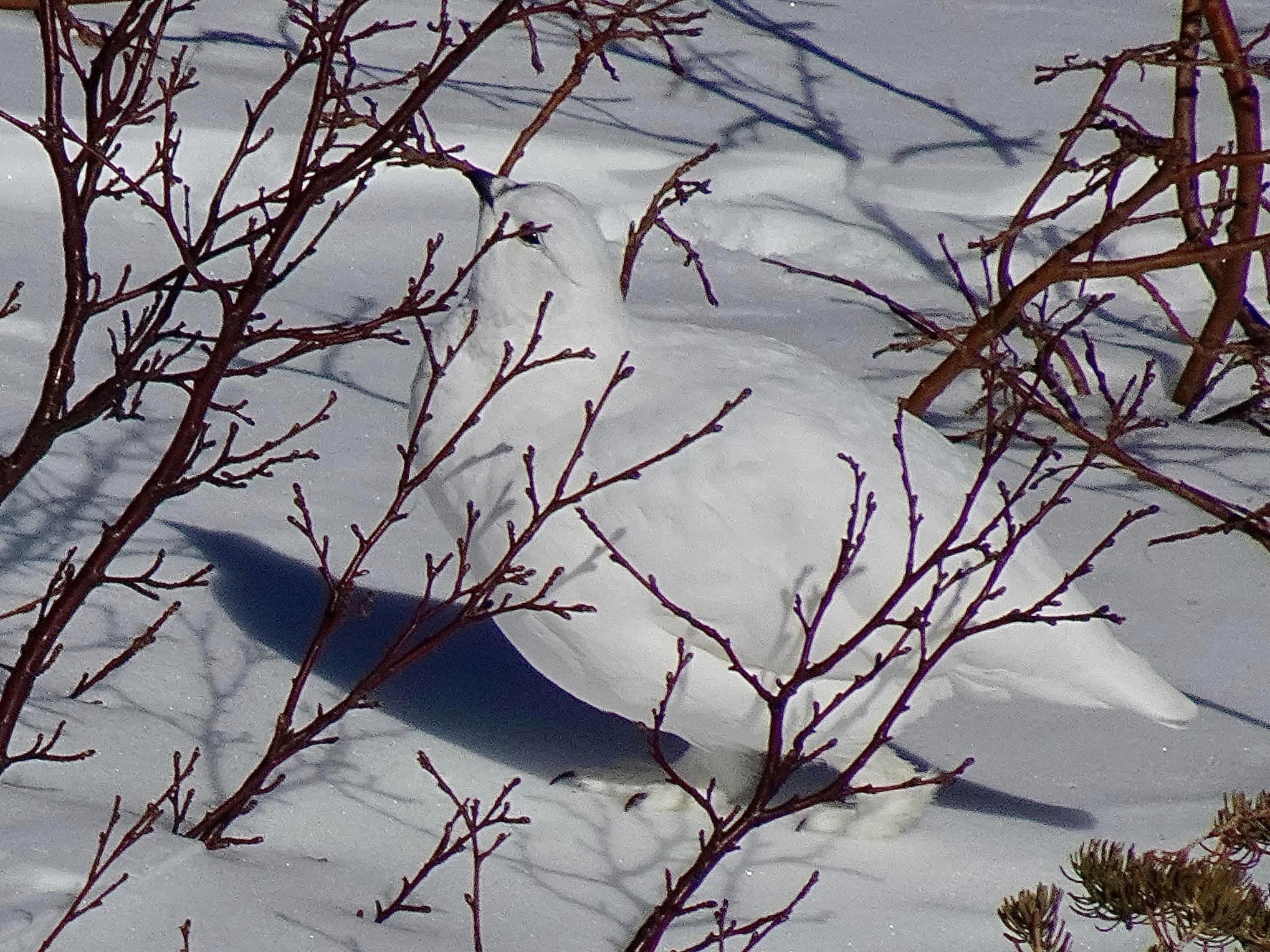Wildlife Wednesday - Ptarmigan in Winter
By Andy Ames
High up in the upper reaches of the Estes valley watershed lives a bird perfectly adapted to the alpine conditions — the White-tailed Ptarmigan. In fact, the White-tailed Ptarmigan is the only bird that spends its entire life at tree line or above. It is so well adapted to the winter that it actually gains weight during these cold months! It does this in two ways. First, consuming large quantities of high protein willow buds, and second, and most importantly, by expending as little energy as possible. That means eating large quantities over short periods of time, walking rather than flying, and bedding down to rest as much as possible. Ptarmigan rely on their camouflage and stillness to elude predators while conserving energy. If you are not careful you may just walk right by.
The elegant White-tailed Ptarmigan has several types of feathers to help keep it warm and toasty. Outer contour feathers seal in the warmth. Soft, downy feather create air pockets close to the body to trap warm body heat. Ptarmigan also have additional “afterfeathers”. Afterfeathers are somewhere in between and are soft multi branched feathers that provide extra loft giving ptarmigan their round body shape.
Tiny feathers cover the eye lids and nostrils. This provides extra protection for the eyes and allows inhaled air to warm before entering the body, much like our nose hairs.
In the winter, feathers extend right to the tips of the toes. Not only do these feathers insulate these sensitive areas, they also provide as much as 40% additional surface area. Much like snowshoes, this allows ptarmigan to travel across soft snow much easier. In winter months, toes nails also grow longer to aid in traction on hard surfaces and digging burrows in the snow.
As you can see from their body shape, ptarmigan are members of the grouse family. While the other grouse of the Estes Valley, the Dusky grouse, is one of the larger grouse, the White-tailed Ptarmigan is the smallest, just a little larger than a pigeon.
Willows are critical for White-tailed ptarmigan winter habitat. Willow buds make up the vast majority of their winter diet as well as shelter from the wind.
The ptarmigan’s sharp beak snips off willow buds. Willow buds are high in protein but also highly fibrous. To help break down this fibrous food, ptarmigan consume small pieces of grit that passes to gizzard. An increased size of their crop allows them to consume large quantities and then bed down to rest and digest.
White-tailed Ptarmigan form groups segregated by sex in the winter. Females and young descend lower closer to tree line while males winter at higher elevations. In addition to willows, snow is also a critical element for ptarmigan winter habitat. Snow provides a blanket of insulation and protection from predators. Ptarmigan dig roosts and burrows, sometimes shallow depressions while others may be a foot or more deep. Their pure white winter plumage allows ptarmigan to hide in plain sight. (I count 7 in this photo).
Ptarmigan tracks can vary depending on the density of the snow. Here you can see the shape of the feathered feet. In harder snow you may see just the nail marks or nothing at all.
Another sign a ptarmigan was here, a depression in the snow for a roosting site (as well as latrine).









